In this fxinsider behind the scenes look at the visual effects of After Earth, we explore the companies and artists behind M. Night Shyamalan’s film, which tells the story of a time 1000 years in the future when our planet is no longer inhabitable. We talk to visual effects supervisor Jonathan Rothbart and to effects producer Jenny Fulle from The Creative-Cartel, and also profile the work of Pixomondo, Tippett Studio, Iloura and The Third Floor.
Shot on the Sony F65 by Peter Suschitzky, the film ran the whole gamut of practical and digital effects work, from on-set destruction, environment extensions, creatures and spaceships. “The most complicated aspect of the work was that we had a number of evolved creatures that were going to be on Earth, but 1000 years isn’t a lot of time from an evolutionary stand-point,” notes Rothbart. “We did a lot of back and forth to try and justify their transformation and do something that felt evolved enough that there was a change, but not over-radically.”
To create the environments of the film – which moves from the new world of Nova Prime to space and to the now hostile Earth – production filmed at several locations in Costa Rica, Philadelphia, Utah, Iceland and Switzerland. “We were always trying to find remote areas we could play off as uninhabited,” says Rothbart.
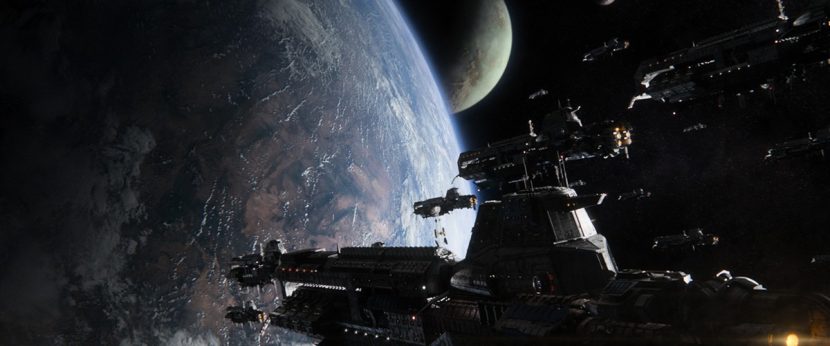
Members of the production and visual effects teams were also in multiple locations – including LA, San Francisco, Toronto, Melbourne and even Nepal – but communicated via various virtual production means. “We ended up doing our post where The Cartel was in Los Angeles, while I was in San Francisco and M. Knight was in Philadelphia,” explains Rothbart. “We had worked out how to do 2K dailies using a FrameCycler / SpeedGrade setup with Knight where he was looking on his screen in his theater, I was looking at it on my hi-res monitor here and the Cartel people were looking at their screen in their office – all of us looking at it in 2K.”
“It wasn’t as dynamic as say a cineSync session but then we had a Skype camera that was faced to Knight’s screen to see any laser pointing that was done and we could talk to him directly,” adds Rothbart. “It worked out fantastically.”
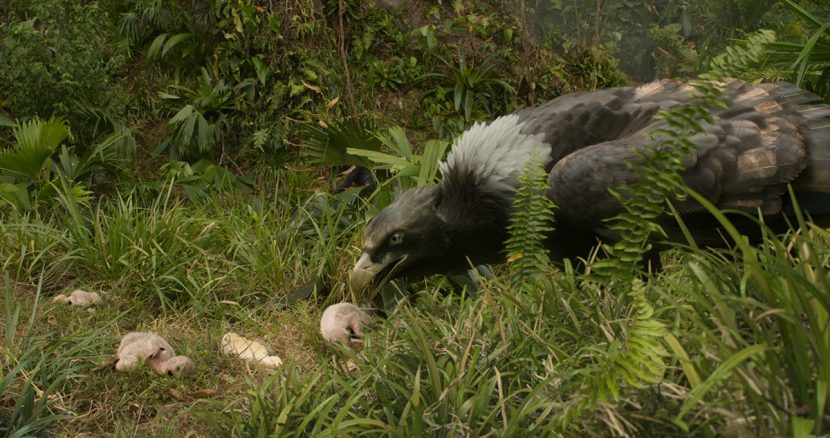
Another tool beta-tested on the film was Joust, software developed by Jenny Fulle and her team at The Creative-Cartel. They relied on it to manage incoming shots and metadata, along with previs and storyboards. “We’d get 150 shots a day and that would be a very manual process with a lot of back and forth,” says Fulle, “so Joust is all about automating some of that and lets us focus on from camera acquisition all the way through to DI.”
Joust is now an editorial, post, on-set and dailies tool available for purchase. The tool allows for uploading of EDLs to facilitate transcoding and VFX pulls and conforms. It also provides for the making of vendor packages with watermarking and secure file transfers. On-set metadata recording is populated into the Joust database, and the viewer lets users watch on-set dailies or VFX review submissions through desktop or mobile devices.
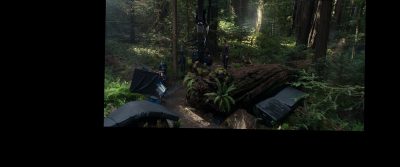
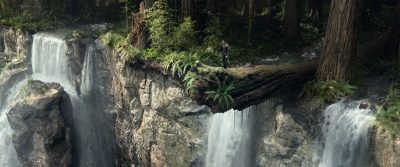
Currently, Joust can be packaged up in a flight case with a server, transcode, firewall, UPS and switches. Fulle says while the system is not overly scalable right now, a cloud solution is being worked on. It was originally written just for The Creative-Cartel team, but “once we had some things in place we thought it would be something that was super useful for people other than ourselves,” says Fulle.
Vendor profile: Pixomondo
The doomed flight
Pixomondo handled what becomes a doomed flight taken by Cypher (Will Smith) and his son Kitai (Jaden Smith) in which their spaceship hits an asteroid field, before they then travel through a wormhole to the now-quarantined Earth. Shots of the military hangar were filmed mostly on greenscreen, with artists using projected matte paintings to flesh out the building. “We also populated the hangar with personnel made up of digi-doubles,” explains Pixomondo visual effects supervisor Alex Henning, “as well as the various ships and support vehicles.”
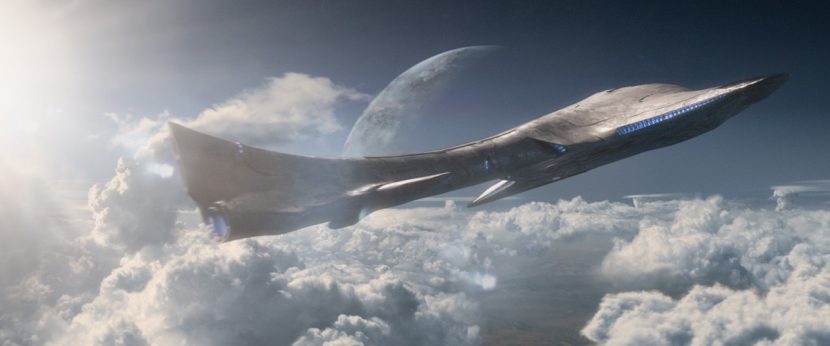
Once in space, the studio realized altitude shots of Nova Prime along with the spaceship and the asteroid field. Much of a cockpit set was replaced in CG to allow for interactive lighting and reflections. At one point the ship rips apart, seen mostly from the point of view of Kitai. “There are two shots where Cypher and Kitai are talking and Cypher gets yanked down the hallway caused by cabin depressurization,” says Henning. “They had Will and Jaden do their performance then had Will gently start to get pulled down the hallway. Then they filmed a stunt double being yanked hard down in that direction. We did the takeover from Will to the stunt double and then the manipulation of the stunt double’s performance. Plus we added flying debris, dust and smoke to help sell the violence.”
For the wormhole, Pixomondo’s brief was to make a gravitational hole in space so strong that it actually bent space and time. “You’ve got a cone that opens in space where we basically rendered a refraction map out of CG and used that in compositing inside of Nuke to do a distortion of the background,” explains Henning. So it appears that space is collapsing in on itself and then we did a particle system to represent light from the environment getting sucked in, then when it opens you have gravitational reverse when everyone comes shooting out so you have a big light burst -combo of Nuke effects and particles.”
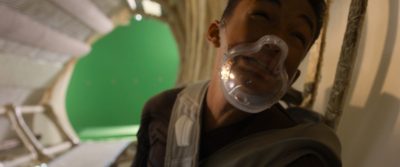
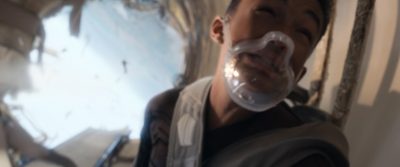
Flying Kitai
At one point, annoyed with his father, Kitai makes a flying leap from a mountaintop above a continental divide using a ‘flying squirrel’-wingsuit. As he traverses the cliffs, Kitai is pursued by a large condor. Visual effects for the sequence where shared with Tippett Studio (condor) and Pixomondo (environments and Kitai digi-double).
Plates for the sequence were filmed in Switzerland at an area called The Crack. Real jumpers captured action using Canon C500 cameras strapped to their helmets or chests. “The Canon C500 was the only camera that had the ability to be 4K and had the exposure range to be similar to the F65 and hold up against it,” says Rothbart. “It also had to be small enough to mount on wingsuit jumpers (the cameramen). We would just take them out in helicopters and then have them jump out of the helicopter so they would come in full of speed up against the cliff and then go 150 miles an hour about 10 to 15 feet off the cliff dropping into these little wedges and gaps – all at 4K.”
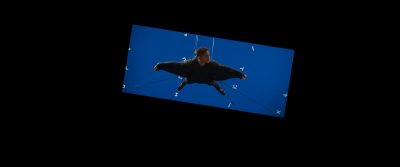
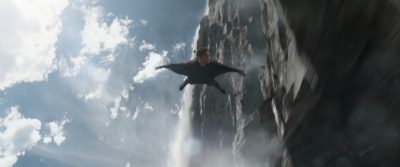
Pixomondo extended cliffs, replaced skies, created a Kitai digi-double and adding extra touches such as CG waterfalls. “It was already bat-shit crazy so we didn’t have to do much more to make it even more dangerous,” says Henning. “Jaden is a combination of bluescreen element that we shot of him hanging on cables or a full on digi-double, or a combination of the two.”
Up the volcano
In order to escape Earth, Kitai must locate a secondary rescue beacon in the tail of the ship and set it above the ‘ionic layer’ where there is no electrical interference. But to do this he must climb an active volcano – the setting for an ultimate encounter with the Ursa. Pixomondo worked on shots of Kitai’s ascent of the volcano from the ground to an upper cave. “They had shot plates of Jaden in Costa Rica on a real volcano,” notes Henning, “but it was a dormant volcano. Of course it had to be an active volcano. We used the camera moves but then extracted Jaden off the complete environment and replaced it with CG geo and matte paintings to create a more scary and dangerous environment.”
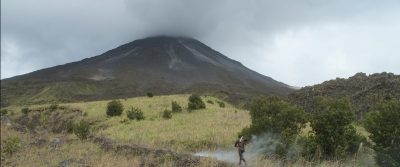
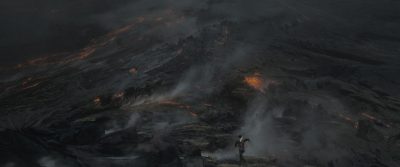
“In one POV shot,” adds Henning, “we see a scene filmed from Kitai’s chest camera that Cypher is watching in the cockpit of the ship. It was a plate shot that we matchmoved to get the camera move but since it’s not an active volcano and not shot at the point on the volcano where the story was taking place, we tracked the plate to get the organic running camera move but then re-built the plate with a volcano in 3G and smoke, atmosphere, lava, plants and even a burning tree.”
Vendor profile: Tippett Studio
Nest attack
Having been captured by the giant condor following his wingsuit flight, Kitai awakes in its nest only to be surrounded by evolved tiger-like jaguars attempting to get the condor’s chicks. Tippett Studio tackled the creatures and environments here under visual effects supervisors Aharon Bourland and Blair Clark.
Watch part of the nest attack.The nest area was a practical partial build that blended into an all-CG nest created by Tippett. “We modeled a ton of sticks and then procedurally instanced them to build out the nest,” says Bourland. “We had it built modularly in eight sections so we didn’t have to have all of it in the scene at the same time. We could pull walls in and out of it. It’s all up on top 120 feet up on a jungle tree, which we also had to build. We had to have a fully CG tree to get the parallax right when you’re looking out at different angles, augmented with matte paintings. There were also custom roof shots for the condor and the jaguar fighting each other on the top of the nest and we were looking up at it. There was a custom rigid body system that one of our effects guys did for the cats running around on top that moved the sticks around.”
For the jaguars, Tippett mixed existing jaguars and tigers, gave them mohawks and provided snake-like markings. “We had a cat trainer come in and they brought cheetahs and mountain lions and we shot reference of them on our stage one day,” says Bourland. “On set they had a taxidermy cat for reference, but mostly we had a stunt performer either in a gray suit or the second unit director with a stick with a ball and then we added our CG jaguars.”
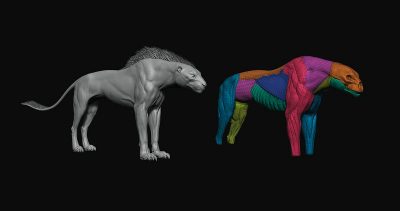

The sequence climaxes with the mother condor flying in and dragging the jaguar away to its death, something Tippett based on YouTube videos of golden eagles dropping goats off cliffs. The condor itself required a new feather system implementation at the studio pivoting on its existing Furator tool. “It’s based on the idea of actually procedurally modeling the feathers using fur curves,” explains Bourland. “The radius is the center of the feather and the barbs that come off of it flesh out the feather. We built a system where you could procedurally build those in Maya and make geometric proxies, and the model is attached to it. That went into our fur system and then it would procedurally grow the feathers in actual fur. There are 20 million hairs procedurally shaped into feathers to make the condor.”
The Ursa
Alien creatures known as the S’krell now use Ursas as their weapons against humans. The blind Ursas hunt by sensing fear, a characteristic that had to be translated to a unique look – initially by Crash McCreery and further developed by Tippett Studio. “It’s a really wild looking monster that has six arms, with upper hybrid metallic bone claws and then six back legs with two knees on each back leg,” says Bourland. “Its outer skin is almost translucent and torn away in areas and you can see its inner musculature inside of it, and then you can also see the bones through its muscles. There are also metal plates on its skeletons. We had to build it our almost anatomically with a skeleton, the plates, builds muscles and then skin.”

Tippett implemented a new skin sliding system for the Ursas that allowed pulling and sliding over the bones for a more organic look. The creature could also spit a black gooey acid. Says Bourland: “It had a strange mouth structure where it could split its jaws and there’s an inner proboscis that splits the acid out. It had every terrifying thing you could put into one monster!”
The Ursa features in a fight against Kitai in a cave atop the volcano. Tippett created an underground lake area as well as the scene of the final battle. “They built up two of the walls and the ground for the fight so we had to build set extensions for the cliff up with giant vista matte paintings for all of the surrounding areas,” notes Bourland. “There was ash falling so we also did particle sims for that for the whole sequence. We used a lot of projection painting in Nuke where we built out the geometry, projected it in Nuke and went straight into comp with it instead of doing it through PRman. Even for the big vistas we mapped them onto big spheres and did it all in Nuke in comp.”

Vendor profile: Iloura
The world of Nova Prime
Live action filmed in a Grand Canyon-like environment in Utah served as the basis for the new world of Nova Prime which was then fleshed out by Iloura. “We started with a core plan for how the city would be laid out,” says Iloura visual effects supervisor Glenn Melenhorst. “There was a lot of large architecture and sweeping buildings with sails instead of glass windows. There were lots of supporting structures and zip lines and monorail transports to create as well.”
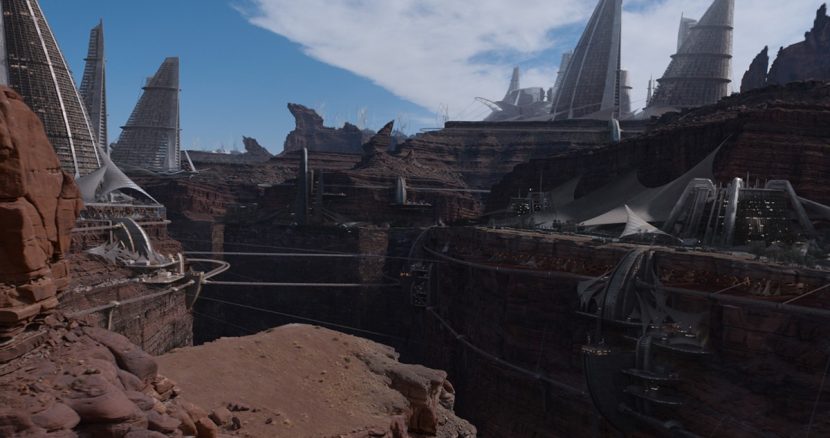
Iloura’s collection of creatures
Baboons, okapi, hogs, spiders, snakes, birds and whales were just some of the many ‘evolved’ creatures Iloura delivered for After Earth. “There’s one shot where Kitai leaves the ship and comes up over the ridge and there’s a massive 360 pan around him with the whole vista of the landscape,” states Melenhorst. “When it was shot one hill had roads and bits and pieces all over it, but they needed to have thousands of bison grazing. It was steep terrain so we couldn’t just scatter a bunch of particles with random animation. We had to have flocking algorithms and drive different animation cycles.”
The baboons surround Kitai.For a group of baboons Kitai encounters, production filmed the actor running through a forest. “It was looking pretty good but then we also put some stunt guys in gray suits and started chasing after him,” says Rothbart. “It definitely changed the emotion and the intensity of his running having these guys bearing down on him and it also gave us lots of happy accidents.”
Iloura sculpted maquettes for the baboons at their studio without fur. “We had to make them seem like baboons but 1000 years more evolved,” says Melenhorst. “A lot of that was in the grooming and the manes they had.” The hair was solved with Yeti, a node-based hair grooming tool from Peregrine Labs. “We had combed with other systems in the past,” he adds, “but what we hadn’t had to deal with in a big way before was dynamics, and these baboons had much more fluid manes.” A scene with okapis stampeding through water (sim’d in Naiad) was also almost completed by Iloura but ultimately cut from the film.

Icing over
Earth now experiences violent thermal shifts, evidenced by the sudden freezing over of the environment. A precursor to the ‘icing-up’ sees forest foliage begin to fold up, one of Iloura’s tasks. “We populated the forest shot with our own foliage and painted out the existing forest,” explains Melenhorst. “When the frost comes through there’s one sequence where Kitai succumbs to it and we had to put a lot of frost growing on his face and lashes and the grass around him – all that was shot broad daylight. We color corrected and graded the plate and then hand-tracked the wobbling grass and leaves and we put icicles growing onto each of those planes.”
“We did a lot of animated maps,” adds Melenhorst, “almost like growing fungi spores. We had some basic internal theory that the younger and greener bits containing water would ice over first and then the bark would ice over last, and the rocks would cop it later still. We could isolate those colors out of the plate and drive animated maps through the colors to drive the ice into different directions.”
Vendor profile: The Third Floor
The Third Floor came on board to do previs work for a series of reshoots for the film’s end sequence, the wingsuit flight and the flashback of Senshi’s death. “One of my favorite moments was during the Ursa fight,” says previsualization supervisor Joshua Wassung. “After Kitai gets hurt, he falls back into a fearful state causing the Ursa to ‘see’ him again. Will was looking for a way to quickly show Kitai regaining his composure, and releasing his fear. Together with Will, we had the idea of referencing Cypher’s go-to phrase, ‘take a knee.’
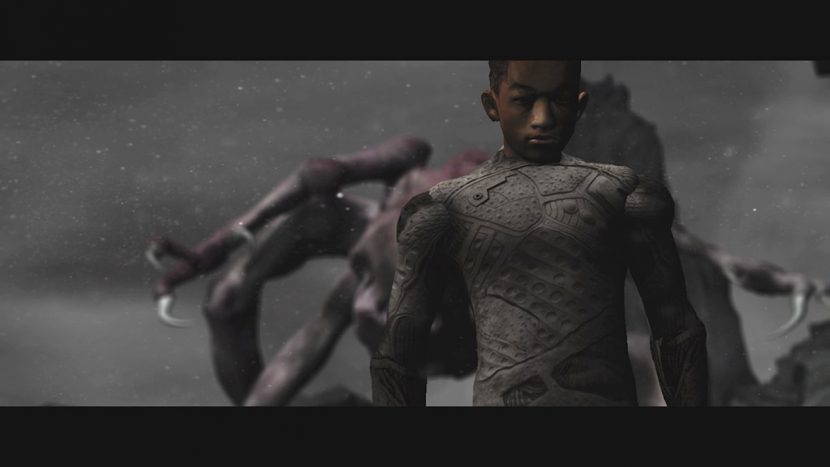
“The result was a slow-motion shot of Kitai dropping to his knee as the Ursa raced toward him in the background. The camera then pushes in to Kitai’s face emphasizing his zen expression as the Ursa’s huge claws finally grip the rock next to Kitai’s head. The shot really represented everything we were trying to achieve in the sequence and conveyed a lot of emotion.”
For their previs on After Earth, The Third Floor capitalized on previous development of human rigs suitable for animatics. “The rig is universal across all characters so we can easily share and duplicate animation,” explains Wassung. “We can easily switch from keyframe to motion capture, IK to FK, or any number of different world space configurations. For creatures and vehicles, we usually build custom rigs tailored for the shows’ specific needs. We need the custom rigs to be robust, but they do not need to be as detailed as finals. For example, we avoid setting up muscle systems to reduce the R&D time and to keep our scenes as light as possible as well. In After Earth, the Ursa has six legs, creating a unique challenge, but we were still able to turn a functional rig around for the team in just a day or two.”
All images and clips copyright 2013 Sony Pictures.
